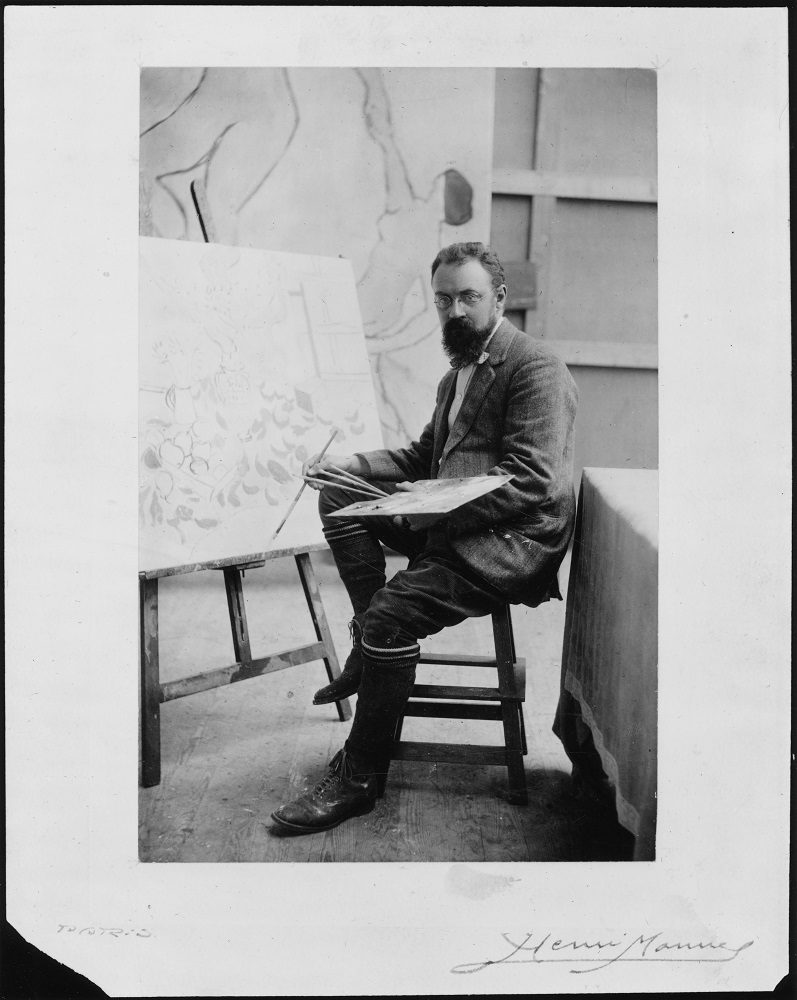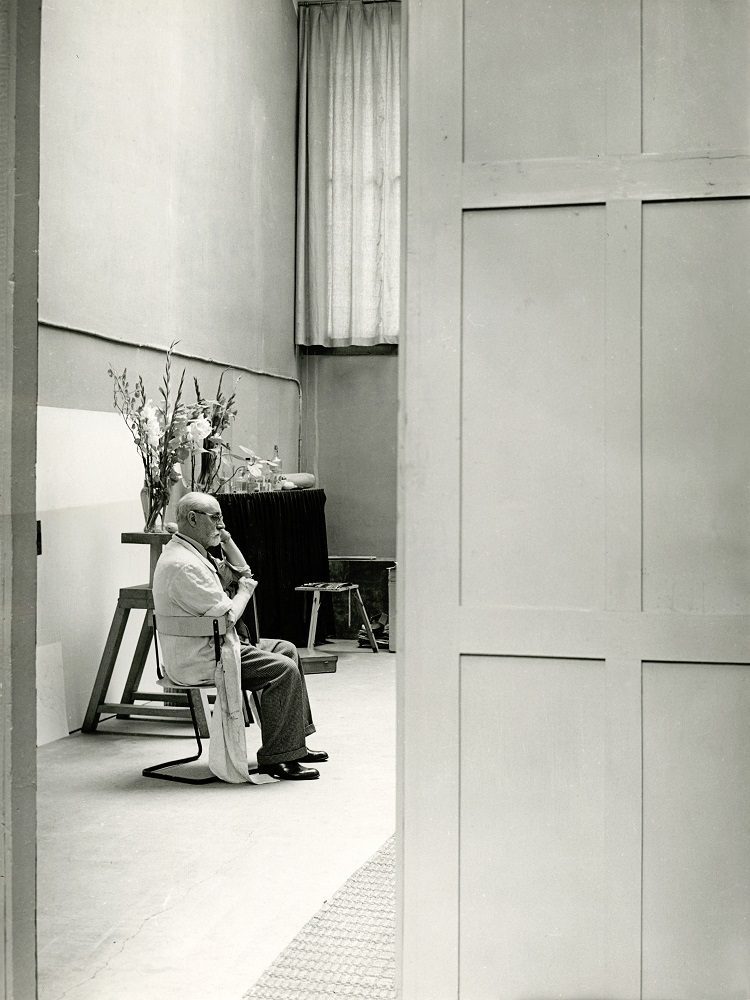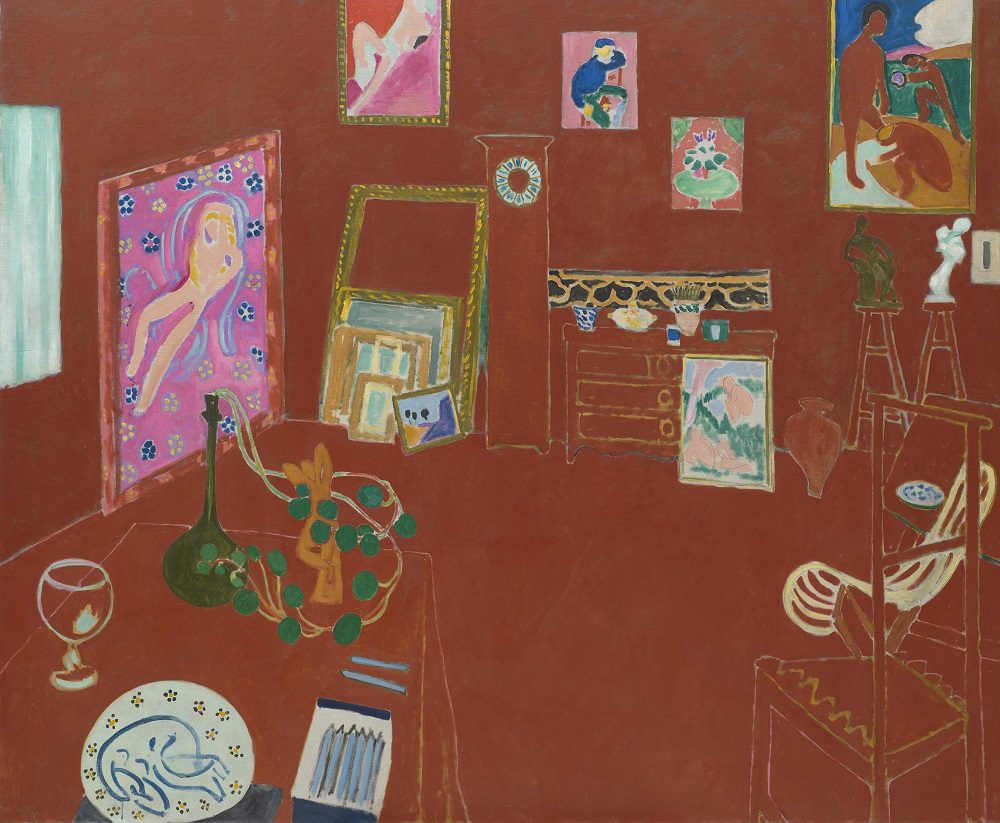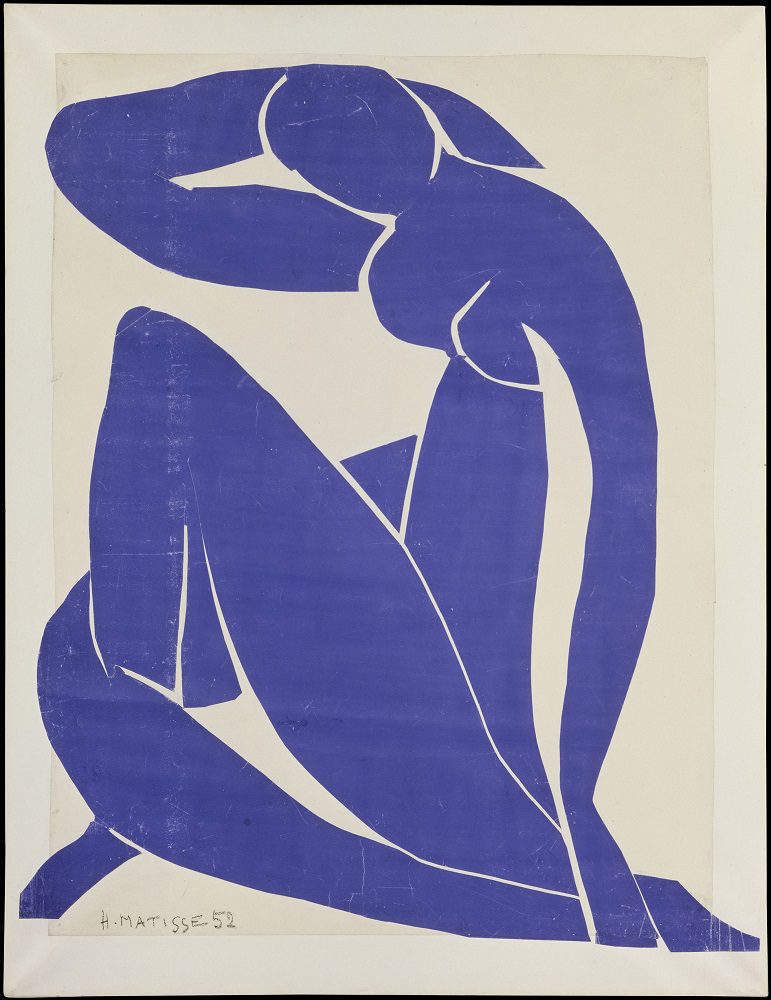
As we commemorate the 70th anniversary of Henri Matisse’s passing on November 3rd, Scala is thrilled to invite you on a journey through the renowned French artist’s creative evolution.
This immersive journey will showcase Matisse’s vibrant use of colour which animated his works across various styles and periods, from pointillism to fauvism, and onward to the realm of collages and abstract geometries.
You will be guided through prestigious collections housed in top international museums, where Scala has either carried out photo campaigns or is the official agent.
Henri-Émile-Benoît Matisse was born on December 31, 1869, in the town of Le Cateau-Cambrésis in northern France. Growing up in Bohain-en-Vermandois, Matisse initially pursued studies in law, but soon after having appendicitis and being confined to bed in 1889 he began his artistic journey. In 1891, Matisse made the pivotal decision to relocate to Paris, where he enrolled at the Académie Julian and later pursued his artistic education at the École des Beaux-Arts. During his time in Paris, he had the privilege of being mentored by the symbolist painter Gustave Moreau.
During the period from 1904 to 1908, Henri Matisse focused mostly on experimentation which, along with the work of other artists like André Derain and Maurice de Vlaminck, led to the birth of the Fauvism movement. This artistic movement was distinguished by its bold and non-naturalistic use of colour. The name itself comes from the art critique Louis Vauxcelles, that, while visiting the Paris Salon D’Automne in 1905, described the rooms in which the works of this artists were displayed as “cage aux fauves” – a cage of beasts. Fauvism represented a significant turning point in modern art, advocating for expressive freedom and creative instinct.

In the years that followed, Matisse continued to explore new techniques and styles. His work became more and more refined and decorative. He moved to Nice in 1917, where he focused primarily on portraits and still lives, all characterized by a vibrant use of colour. A second turning point in Matisse’s artistic exploration came in the 1940s, once again due to a challenging state of health, which inspired the artist to create a new technique: “gouaches découpées” or cut-out paper collages.
Matisse died on November 3rd 1954 in Nice.

In virtue of the exclusive agreement between Scala and RMN, we are happy to show you a photo campaign in Matisse’s studio in the 1930’s by the renowned French photographer Brassaï. Brassaï created several portraits of Matisse, some of which have become iconic.
The friendship between Brassaï and Matisse is an example of how two artists, although active in different fields, can find common ground and mutually enrich each other through dialogue and collaboration. Matisse greatly appreciated Brassaï’s work and saw in him as an artist capable of understanding and interpreting visual art in a unique way, even working through a technical instrument such as the camera. On the other hand, Brassaï found in Matisse a continuous source of inspiration: a master capable of teaching him new perspectives on light, colour, and form.
One of the highlights of their friendship was the collaboration for the art magazine “Minotaure,” which published several works by both artists. Furthermore, Brassaï photographed the works of Matisse, contributing to their dissemination and making them known to the public.
Henri Matisse used colour in an innovative way, even from his early works in the pointillist period, exploiting its qualities to create effects of light, warmth, and vitality. More specifically, yellow was the colour with which Matisse could create warm atmospheres and emphasize the energy of certain scenes and classical compositions. During the Fauvist period, the colour yellow, like other pure colours, was used to express emotions and moods. The artist’s use of colour was not only decorative but aimed to convey feelings and sensations to the public.
In many of his works Matisse juxtaposed yellow with contrasting colours, such as blue and purple, to create a strong visual impact. These contrasts heightened the intensity of the colour and created a dynamic balance within the composition.
In Le Bonheur de Vivre, one of Henri Matisse’s most famous paintings, we can observe the combination of these pure and bold colours – yellow, red, green, and blue – to create an exciting visual effect.
Take a look at other artworks, spanning various periods and styles, where Matisse incorporated the colour yellow.

During the entire period of Fauvism, Matisse used pure and brilliant colours, applied in a non-naturalistic manner. As we have seen with yellow, the goal was to express emotions rather than faithfully represent reality. Matisse believed that colour had an intrinsic expressive power and used different shades to evoke specific emotions and atmospheres. For instance, warm colours such as red and orange often convey energy and vitality, while blues and greens evoke peacefulness and calmness.
The use of a single dominant colour is used in a particularly unique way in defining interior spaces. Matisse often flattened the traditional perspective, using red to emphasize the two-dimensionality of the painted surface. This approach allowed the viewer to focus on colour and form, rather than the realistic representation of depth. One of the most famous works where we can observe this effect is “The Red Studio” (1911) preserved at the MoMA in New York.
In this scene, the colour red is dominant, enveloping the entire composition in a warm tone. This demonstrates Matisse’s skill in using colour to establish a sense of unity and cohesion. In fact, this colour unifies the space; red is employed not only for the walls and the floor, but also for many of the objects in the room, thereby creating a vibrant and warm atmosphere.
Read more information on Matisse’s Red Studio, which was at the centre of a prestigious exhibition set up by MoMA in 2022.

In the 1940s, Matisse introduced a new and distinctive approach to exploring colour through the “gouaches découpées,” in which the artist utilized cut-out painted gouache paper to produce dynamic compositions. Artworks like Icarus (1947) and La Gerbe (1953), are defined by vibrant colours and simplified shapes, showcasing Matisse’s enduring passion for colour, even in his later works.
During this period, Matisse employed colour and form to generate a sense of space and motion: the cut-out shapes, often simple and inspired by nature, seem to float and interact harmoniously on the surface.
One of Matisse’s renowned collage collections, “Jazz“, consists of 20 works that combine images and text with vibrant colours and dynamic shapes. Matisse believed that art should evoke joy and vitality. His collages embody this principle, conveying a feeling of light heartedness and optimism.
The art of Henri Matisse is exhibited in some of the most prestigious collections in the world. Delve into Scala Archives to see these masterpieces. If you are unable to locate a specific image of Matisse’s work for your project, please get in touch with us, not all our images are available online yet.
Starting from January 1, 2025, the works of Matisse will no longer be protected by artist copyright in Italy and many other countries worldwide. Nonetheless, Scala Archives advises everyone to not only check with your national collecting society but also to be mindful of the image file quality to ensure the excellence, including chromatic accuracy, of your creative endeavours.
***
In the cover: Henri Matisse, La danse (The Dance – first version, Paris, March 1909). Museum of Modern Art (MoMA), New York, USA – 0164590